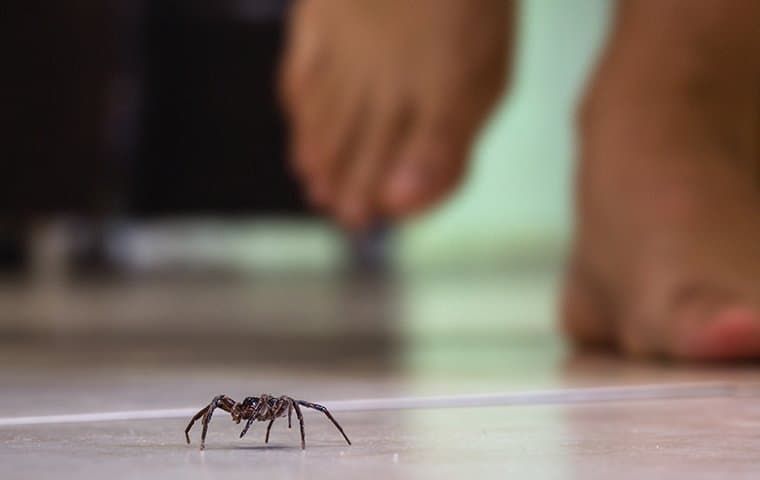Discovering spiders in your home can be an unsettling experience, especially in a region like Salem, OR, where certain species are more common. Understanding the steps for successful spider control in Salem is crucial to ensure your home remains a safe and comfortable environment. This guide will provide essential tips to identify common spider species in the area, their behavior, and how to implement practical and safe measures to control their presence. Whether dealing with a solitary spider or a concerning invasion, you’ll learn to assess the situation calmly and take decisive action.

What Kind Of Spiders Are There In Salem?
Salem, a region with diverse habitats, hosts a variety of arachnids, making it essential to understand the types of spiders you might encounter. Among these, the notorious black widow spider stands out due to its distinctive markings and potential health risks.
However, not all spiders in Salem pose a threat. Residents can encounter a wide range of spiders, from the common house spider, known for its web-spinning abilities in the corners of homes, to the more reclusive cellar spider. The orb-weaver spider, admired for its intricate webs, also frequents gardens and wooded areas. Recognizing these types of spiders is important for residents to coexist with these eight-legged neighbors and know how to respond appropriately if they intrude into living spaces.
What It Means If You’re Seeing Spiders In Your Home
Seeing spiders in your home can be a sign of various factors that go beyond simple chance encounters. Decoding what it means if you’re experiencing a spider infestation is essential.
First off, spiders are opportunistic predators, and their presence could indicate a thriving insect population in your home. These arachnids gravitate to spaces where they can find a stable food source. Second, changes in weather or seasons can influence spider behavior, causing them to seek shelter indoors. Additionally, if you’ve recently moved into a new residence, the previous occupant’s habits and pest control measures may impact the likelihood of a spider infestation.
Understanding the underlying causes behind spider sightings can help you take proactive steps towards spider control.
Natural Ways To Prevent Spiders In Your Home
Preventing spiders in your home can be effectively achieved through natural methods that are safe for both residents and the environment. Here are some eco-friendly strategies to prevent spiders from invading your living space:
- Regular Cleaning: Keep your home clean and clutter-free. Spiders are less likely to establish webs in tidy environments.
- Seal Cracks and Gaps: Inspect your home for any openings, cracks, or gaps in windows, doors, and walls. Seal them to deny spiders entry.
- Essential Oils: Certain essential oils, such as peppermint, lavender, and citronella, are known spider repellents. Use them as sprays or diffusers.
- Vinegar: Create a vinegar and water solution and spray it in spider-prone areas.
- Cedarwood: Use cedarwood blocks or chips in closets and drawers to deter spiders.
- Remove Webs: Regularly remove existing spider webs to discourage spiders from returning.
- Keep Outdoor Lights Off: Attracting insects with outdoor lights can attract spiders. Yellow lights tend to be less appealing to spiders.
- Plant Natural Repellents: Certain plants like mint, eucalyptus, and lavender can deter spiders when planted near entry points.
By practicing these natural methods to prevent spiders in your home, you can maintain a spider-free living space without resorting to harmful chemicals.
Total Spider Control For Your Home
For comprehensive spider control in your home, consider enlisting the expertise of Kanga Pest, your trusted partner for spider removal services. With our experienced professionals and advanced techniques, Kanga offers a total solution to rid your home of unwanted arachnids. Our spider removal service goes beyond mere extermination; it focuses on preventive measures to ensure a long-term, spider-free environment. Kanga Pest delivers reassurance by addressing the root cause of the infestation and implementing effective strategies.
